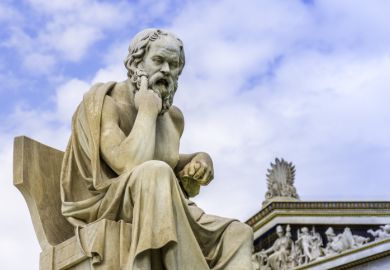The Dappled World is a wide-ranging and knowledgeable account of science and the practice of science. Based mostly on previously published articles, the book is the third in Nancy Cartwright's re-evaluation of how we think about scientific knowledge and one in which she sees her own work as redefining the enemy (her term) as fundamentalism, as opposed to realism.
Divided into three sections, the book documents, in part, the serious comparison between physics and economics that has been a high-profile part of the London School of Economics philosophy agenda in recent years. But it also reports on the view that our idealised pictures of scientific knowledge, even in physics, do not always, or often, describe the way in which science proceeds.
Section one comprises a trio of chapters dealing with the question, where do laws of nature come from? Cartwright finds the answer in a position she defines as local realism: the facts that scientists look for, want to be true, and which need not be exact, concern, essentially, what it is things might do - nature's capacities. In science, we specify a theory and an interpretation, (a "nomological machine") from which results flow in a deterministic fashion. In reality, we establish some initial conditions from which we expect to see certain kinds of results. But laws can only hold for scientific models and if they hold in actuality, they do so only ceteris paribus . Fragments of science that work well in context may not fit together neatly so we should not push consistency too far.
Local realism dispenses with universality but keeps truth - a far more congenial balance to most scientists and philosophers than the excesses of social constructivism against which Cartwright contrasts her position. A central tenet of her view is that capacities may, or may not, manifest themselves. Many people in England could learn to get by in a foreign language, though given the educational system, most do not. Real capacities need not be revealed, an insight that does not appear to help methodological behaviourists.
One of the tensions in the book derives from an interesting juxtaposition of ideas that emerges from discussing laws and their limits. First, physicists are criticised for not sufficiently acknowledging the ceteris paribus nature of their laws or empirical regularities. In addition, Cartwright seems to advocate a statistical approach in favour of deterministic models and suggests that probabilities come from models. Both points seem right but not best served by a discussion of a possibly weak, and certainly not particularly well-known piece of econometric analysis.
There is a good and much-needed discussion of how game theory works as a science without going anywhere near empirical facts, though the conclusion that precision, narrowness and poor fit for reality are generally connected seems to over-generalise. The prisoner's dilemma game is formally precise and correctly models a wide class of real decision problems including environmental conflicts. Game theory is weak on why and when people cooperate in such games.
Game theory is hardly a special case and it is useful to make the point that theory acceptance does not go just by empirical or sociological criteria. The point about economics is that empirical evidence, exact or otherwise, now plays a very small role in either theory development or acceptance. For much of what purports to be formal theory in economics is actually about language construction.
The final section, "The boundaries of quantum and classical physics and the territories they share", is more exclusively oriented towards issues in physics. Taking as its starting point the idea that models play a central role mediating between theory and the world, Cartwright argues that models represent the world while theories give purely abstract relations between abstract concepts. This could provide succour for formalists though that is not Cartwright's aim. Rather she is generous to physics in practice but attributes success, in part, to the addition of non-theoretical additional insights essential at the point of application.
The Dappled World is a collection of papers that draws on unique insight into philosophy, physics and economics. Though it does not always make for easy reading, it is written with a literary sensitivity, knocks numerous nails square on the head and tells a big if sometimes densely woven story. It provides a wonderful antidote to the abundant quack-medicine views of what science is and an excellent example of progress in philosophical thought.
Paul Anand is lecturer in economics, Open University.
The Dappled World: A Study of the Boundaries of Science
Author - Nancy Cartwright
ISBN - 0 521 64336 8 and 64411 9
Publisher - Cambridge University Press
Price - £35.00 and £12.95
Pages - 247
Register to continue
Why register?
- Registration is free and only takes a moment
- Once registered, you can read 3 articles a month
- Sign up for our newsletter
Subscribe
Or subscribe for unlimited access to:
- Unlimited access to news, views, insights & reviews
- Digital editions
- Digital access to THE’s university and college rankings analysis
Already registered or a current subscriber?



